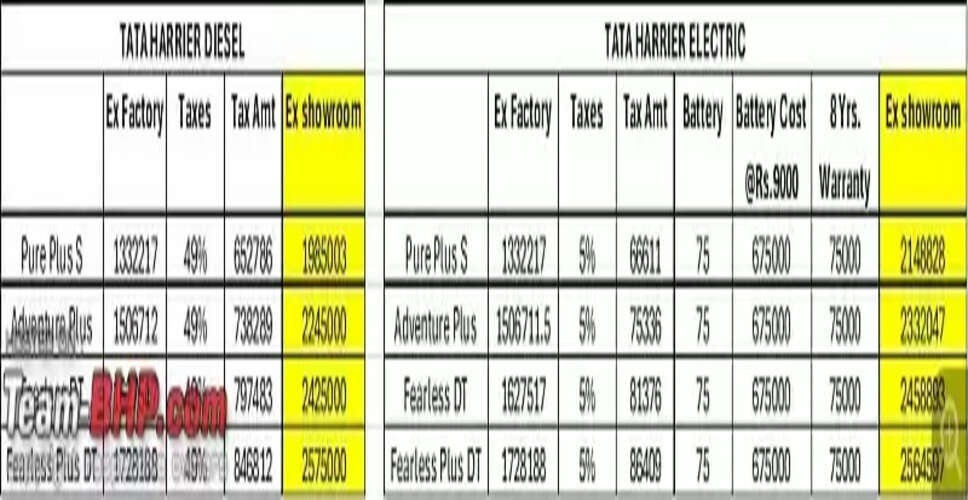Tata Harrier EV: A Comprehensive Overview and Comparison with Competitors

Tata Harrier EV Launch
Tata has unveiled its latest Harrier EV, featuring a range of segment-first innovations and enhanced accessibility that position it strongly against competitors. This electric vehicle will compete with models like the Hyundai Creta Electric and Maruti Suzuki E-Vitara. Notably, while the E-Vitara offers a rear-wheel drive option in select trims, the Hyundai Creta lacks an all-wheel drive alternative. The Harrier EV will be available with both 65KW and 75KW battery packs, and it will also include a new QLED screen provided by Samsung, along with ADAS level 2 safety features.
Suzuki E-Vitara Features
The E-Vitara marks Suzuki's entry into the electric vehicle market, showcasing their commitment to creating a competitive option for consumers. This model comes equipped with ventilated seating, adaptable boot space, and a host of other features. Suzuki has developed the HEARTECT-e platform, a complete redesign tailored for electric vehicles, ensuring a perfect mix of innovation, efficiency, and performance. The E-Vitara is powered by a high-capacity battery made from Lithium-ion cells, tested for functionality in temperatures ranging from -30°C to 60°C. It features a 61 KWH battery that provides an impressive range of approximately 500 kilometers.
Detailed Comparison with Rivals
| Comparison | Tata Harrier EV (Expected Specs) | Suzuki Grand Vitara – ICE, HYBRID (Alpha Smart Hybrid All Grip) | Hyundai Creta Electric | Suzuki E-Vitara |
| Motor | QWD setup with a new E propulsion system from Schaeffler, available in 65KWH and 75KWH variants, delivering 158 Ps and 500Nm torque. | 1462cc 4-cylinder engine, producing 102 Bhp and 136.8 Nm. | 169 Bhp and 200 Nm. | Single motor for 49KWH battery with 144 Ps and peak torque of 192.5 Nm; 174 Ps single motor with 192 Nm peak torque for the 61 KWH battery. |
| Range | Approximately 480 Km range with the 65KWH battery pack. | 872 KM on a full tank. | 473 KM as per Hyundai's specifications. | 500 KM on a full charge. |
| Features | Vehicle-to-vehicle charging capabilities. | Mild hybrid features with All Grip system. | Vehicle-to-vehicle charging capabilities. | AWD capability with Suzuki e-All Grip mode. |
| All-Wheel Drive Capability | Yes | Yes | No | Yes |
| Charge Time | 7.2 KWH charger, approximately 8 hours for full charge. | 4 hours 50 minutes on an 11KW charger. | Charging options include 7KW AC and 70KW DC fast charging. | About 9 hours. |
| Prices | Starting at Rs 21 lakhs, with bookings opening on July 2. | Rs 19.56 Lakh. | Rs 17.99 to 24.38 Lakh. | Rs 17 - 22.50 Lakh. |
Anticipated Pricing
While Tata has not disclosed the complete pricing for all variants, they have indicated that the Harrier EV will start at Rs 21.49 lakhs. A leak from a user on a popular automotive forum suggests that the starting price could be Rs 21,488.28, potentially reaching up to Rs 25,645.97 for non-AWD versions. Although this information is circulating online, the final prices announced by Tata may differ from these figures.
